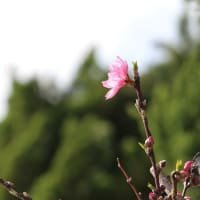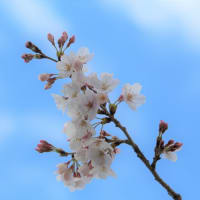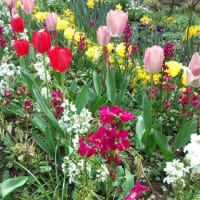
If you have ever seen this picture of the gallbladder meridian, you might think, "Is there such a pathway in reality?" This answer seems difficult to verify, however, if we learn the history of the meridian, this is simple. The pathway does not exist physically.
According to an acupuncture book Zhenjiu-Jiayijing (鍼灸甲乙経) edited in about AD 259, the acupuncture points of the gallbladder meridian on a head had not sorted. They were categorized not by meridians but parts of the body. On this point, Zhenjiu-zishengjing (鍼灸資生経) edited in AD 1220 is same.
At AD 1341, then, a Chinese poetry about acupuncture points was composed by Hua Shou (滑寿) in Shisijing-fahui (十四経発揮). In the literature, the order of all of the acupuncture points was fixed. This did not mean that qi flow in this order. This order was only for memorizing acupuncture points for students. Then this poem has not changed up to the present time. In comparison to Zhenjiu- Dacheng (鍼灸大成) edited at AD 1601 ─this has also a poem of acupuncture─, these poems were almost the same. The only difference between them is whether they have Fengshi (風市: GB31) or not; Zhenjiu-Dacheng considered Fengshi not as jixue (奇穴) but jingxue (経穴) the main acupuncture point on the meridian.
A Poem of Acupuncture Points of Gallbladder meridian
Gallbladder meridian: from Tongziliao (GB1), 43 points form into a line too long,
Tinghui (GB2), Shangguan (GB3) and Hanyan (GB4) gather round, Xuanlu (GB5), Xuanli (GB6) and Qubin (GB7) go up,
Shuaigu (GB8), Tianchong (GB9) and Fubai (GB10) run on, Touqiaoyin (GB11), Wangu (GB12) and Benshen (GB13) stand up,
Yangbai (GB14), Toulinqi (GB15) and Muchuang (GB16) open, Zhengying (GB17), Chengling (GB18) and Naokong (GB19),
Fengchi (GB20), Jianjing (GB21) and Yuanye (GB22) are long, Zhejin (GB23), Riyue (GB24) and Jingmen (GB25) work,
Daimai (GB26), Wushu (GB27) and Weidao (GB28) run on, Juliao (GB29), and Huantiao (GB30) and Zhongdu (GB32) go down,
Xiyangguan (GB33), Yanglingquan (GB34) and Yangjiao (GB35) come back, Waiqiu (GB36), Guangming (GB37) and Yangfu (GB38) are high,
Xuanzhong (GB39), Qiuxu (GB40) and Zulinqi (GB41), Diwuhui (GB42) and Xiaxi (GB43) are, and then Zuqiaoyin (GB44) is the last one.
足少陽胆経穴歌
少陽足経瞳子髎 四十三穴行迢迢
聴会客主頷厭集 懸顱懸釐曲鬢翹
率谷天衝浮白次 竅陰完骨本神企
陽白臨泣開目窓 正営承霊及脳空
風池肩井淵液長 輒筋日月京門当
帯脈五枢維道続 居髎環跳下中瀆
陽関陽陵復陽交 外丘光明陽輔高
懸鐘丘墟足臨泣 地五侠渓竅陰畢
The verbs and the adjectives in this poem are not important; they are used only for rhyme. Then, that figure was made by connecting these acupuncture points following this poem's order. On the other hand, what did the“Chapter10; Meridians (經脉篇)” in Lingshu (霊枢) on which present meridian theory was based says?
The gallbladder meridian starts from the outer corner of the eye, and runs up to the corner of the forehead, and down to the back of the ear, along the neck, runs along the front of the triple energizer meridian, to the shoulder, and cross with the triple energizer meridian, runs into the supraclavicular fossae.
The tributary of it runs into the ear from the back of the ear out to the front of it, to the outer corner of the eye.
The tributary of it runs down to the daying (大迎) ?front of the angle of the mandible- from the outer corner of the eye, meet the triple energizer meridian at the cheek, runs down to the jiache (頬車)- backside of the angle of the mandible-, down in the neck, join with the supraclavicular fossae, and runs down in the chest, through the diaphragm, link to the river, is controlled by the gallbladder, and runs around the inside of the chest, out to the qijie(氣街)-The inguinale that have pulse of the femoral artery-, circumvent the under hair, runs to outward, and into the hip joint.
The main course of it runs down to the armpit from the supraclavicular fossae, around the chest, over the inferior thoracic margin, down and meet the hip joint, runs down along the lateral aspect of the thigh, to the outside of the knee, down along the front of the fibular, down directly to the edge of juegu (絶骨)-3 B-cun proximal to the prominence of the lateral malleolus-, down to the lateral malleolus, along the dorsum of the foot, into between the fourth and fifth toes.
The tributary of it runs into between the first and second toes from the dorsum of the foot, along inside of the bone of the first toe, to the edge, turn back and runs through the nail, to the sanmao (三毛)-the hairy point of the first toe-. [Translated from ancient Chinese]

Following this describe, Nanyo Hara (原南陽) drew an another picture at AD 1803 in Edo period.
In addition, “Chapter11; Another Meridians (經別篇)” in Lingshu (霊枢) says as follow.
Main passage of the gallbladder meridian runs around the hip joint, and meets the liver meridian. The tributary of it runs into under the inferior thoracic margin, around backside of the chest, controlled by the gallbladder, and branches off in many different directions. They runs to the liver, through the heart, up to the throat, to the lower jaw part, branches off in many different directions in the face, and meet the gallbladder meridian and the outer corner of the eye. [Translated from ancient Chinese]
Zubei-shiyimai-jiujing (足臂十一脈灸経) excavated from Mawangdui (馬王堆) is one of the oldest literature about meridians about 2nd century BC. This says as follow.
The gallbladder meridian runs out from the front of the lateral malleolus, branches out between the bones, and runs up through the outside of the knee, to the outside of the hip joint, to the chest, branches to the scapula. The main passage runs through the armpit, to the nape, the ear and the occiput, to the outer corner of the eye. [Translated from ancient Chinese]
These literatures did not say that the gallbladder meridian runs peculiarly on the head like the top figure. However, after the acupuncture points bound the meridians together as a line, and when the order was fixed by the poem, a new meridian was born. Then that picture was drawn. From this moment, because the new meridians have not been seen by naked eye, some people began to interpret the meridians as invisible one and to consider that invisible qi flow in them.

Originally, some people observed a human body and the blood vessels and recorded it in writing. On the other hand, some people had discovered acupuncture points one after another. Then some people combined the blood vessels called meridian with the acupuncture points to answer a question, “Why these points are efficacious.” “The reason is because these points are connected to internal organs and another body parts by the meridians.”
The order of these acupuncture points on a limb were fixed in early period, however what eventually completed the order was the poem. There is an artistic or literary fallacy in a traditional Chinese medicine. Using or studying it, we need to consider history-based medicine.
(mugaku)




















※コメント投稿者のブログIDはブログ作成者のみに通知されます